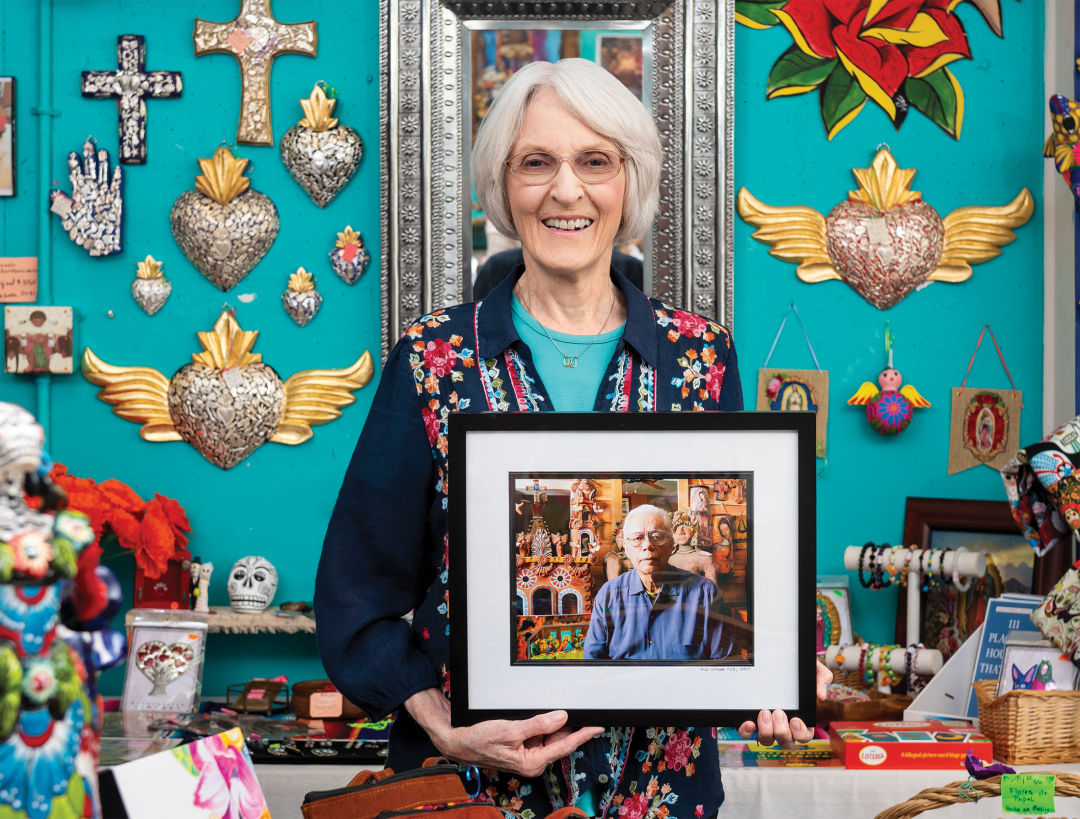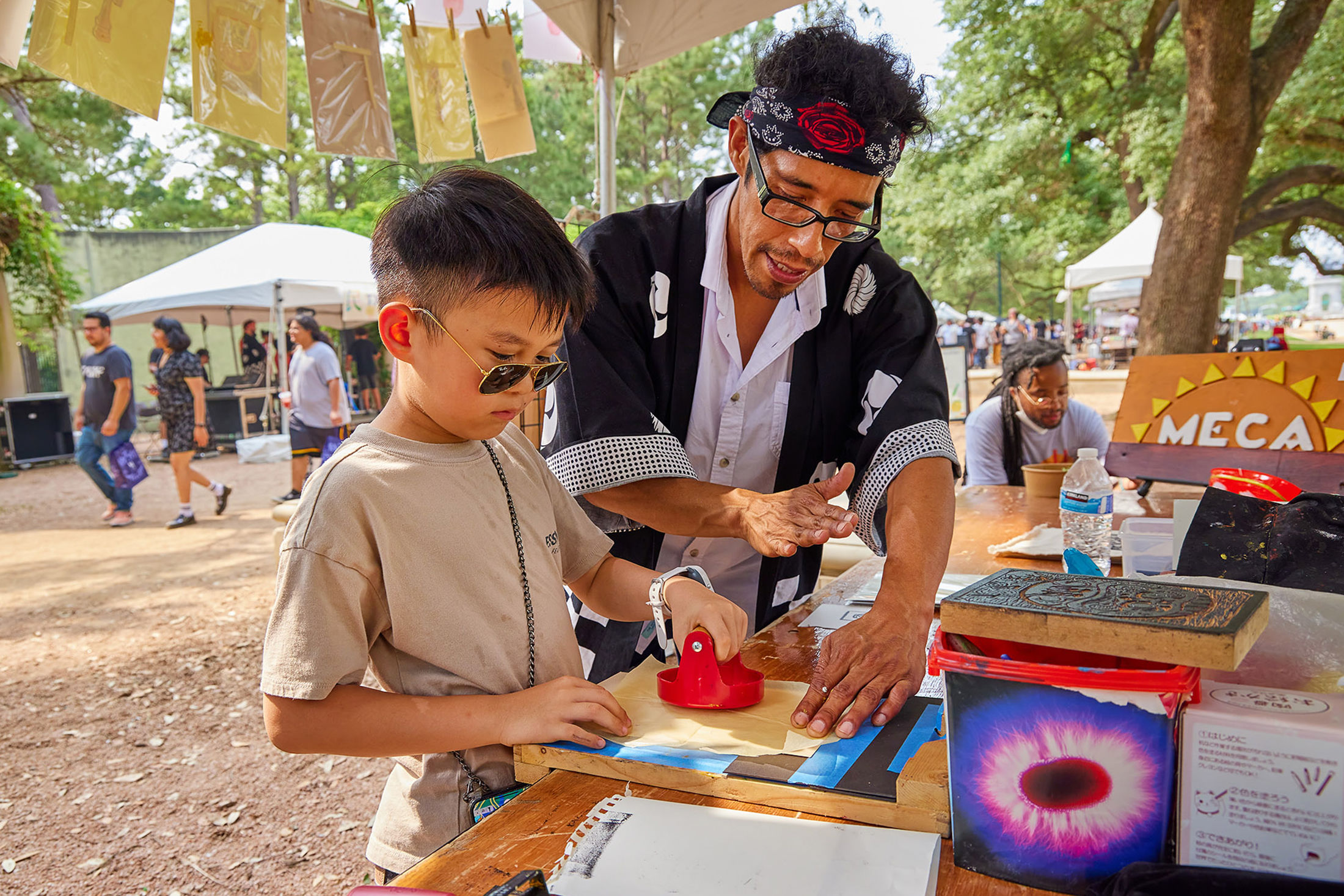Casa Ramirez, Houston’s Beloved Mexican Folk Art Gallery, Will Close After 41 Years

Image: Anthony Rathbun
An ofrenda dedicated to Macario Ramirez’s memory sits next to the front counter at the gallery that bears his name: Casa Ramirez. Friends, family, and visitors place flowers, pheasant feathers, and Aztec and Mayan art on the altar—tangible, vivid reminders of his boundless generosity, love, and prodigious contributions to the local Latin American community. The memorial has kept vigil over the space since the cofounder’s passing five years ago. In March 2026, though, it will oversee a new phase in the gallery’s history.
That’s when the lease for the current space along 19th Street in the Heights expires. Chrissie Dickerson Ramirez plans to retire then, closing Casa Ramirez fully on her own terms. There are no developer shenanigans, landlord chicanery, or slashed grants behind the loss. Only a woman, who has already given so much to the community, needing some time to refocus on other projects.
It’s a bittersweet conclusion, to be certain. Macario and Chrissie opened Casa Ramirez in 1985, as a labor of love and a way to share their passion for Latin American—mostly Mexican—art. Now, they leave behind a legacy of popularizing Día de Muertos in the Houston area and nurturing artistic talent from Mexico and the Southwestern United States.
“That’s one of the things that Macario taught me to do: He was always looking
for equity, always looking for fair representation, always looking for inclusion,”
Chrissie says.
Macario, originally from San Antonio, and Chrissie, from Dallas, initially launched their gallery at the troubled El Mercado del Sol, along Jensen Drive in the East End. For three years, they filled the walls and tables with works sourced from artists they met during their travels to Mexico, California, and other locales where the Latin American diaspora makes its home. For Macario, it was about connecting with his cultural heritage and sharing it with anyone else who expressed curiosity. “You could say [Macario] was a big Chicano, and [Casa Ramirez] gave him an opportunity [for] an activism base and a teaching base,” Chrissie says. “He had as much as he could ask for, really.”
After El Mercado del Sol’s closing, they reopened Casa Ramirez in the Galleria (it was called South of the Border during that era). They even operated the gallery out of their own home before settling into their current space on 19th Street in 2004. The couple, who lived nearby in the Heights, suddenly had close to 3,000 square feet at their disposal to host lectures, workshops, and readings, plus expand the number of artists and craftspeople they could showcase. The space grew into just as much of a gathering place and home away from home for the city’s Latin community as it was a venue for folk art.

Image: Anthony Rathbun
“Walking into Casa Ramirez just brings you back to your youth,” says Houston photographer Agapito Sanchez Jr., who has worked with the gallery for over 30 years. “It is so Mexican. They would always have cookies or a sweet bread out, and it was the same thing that my mother would do. It was actually the same cookie my mother would have out. So it was very familiar to me, and it was like taking a little day trip to the border.”
A major mission for Macario was to establish Día de Muertos—a holiday honoring the deceased, with roots in Aztec rituals—as a household term and widely observed celebration across Houston. Each year, the Ramirezes hosted workshops, encouraging visitors to create deeply personal ofrendas as memorials to lost loved ones. These events provided both a creative outlet for their grief and an education on everything Día de Muertos entails.
In one of her expeditions through his archives, Chrissie found a press release dating back to the 1990s. Macario penned it to explain the holiday’s history and traditions, particularly ofrendas, to the general public. He encountered some pushback at first. Chrissie remembers Macario saying that some visitors would run out of the shop, mistaking the decor for trappings of Satan worship. “It [was] very sad, because [Día de Muertos] is such a beautiful custom of honoring ancestors, and here in America, we don’t have many opportunities to do that right on a regular basis in such a positive way,” Chrissie says. “I feel it’s bringing all the good things forward that you want to remember, and if you still have things to reconcile, it’s a time to do that, too.”
Ignorant reactions were not the norm, however. For many of Houston’s Latin American residents, Casa Ramirez offered a much-needed environment for feeling seen and supported, where their history, culture, and contributions were all worthy of celebration. The Ramirezes didn’t pay lip service to the concept of business-as-family; they genuinely lived these professed values.
“I love working here,” says Martha Almaguer, Casa Ramirez’s store manager, who has been with the gallery for around a decade. “This is my safe haven.”
Almaguer first met Macario and Chrissie during a shopping trip with some friends and mentioned her desire to create an altar commemorating her late nephew; the owners invited her to attend one of their ofrenda workshops. The Ramirezes provided much-needed healing, with advice and lessons on an aspect of Mexican culture that Almaguer hadn’t experienced growing up. Later she’d visit Casa Ramirez with her husband to make and sell crafts until his passing, nearly four years ago. His death left her devastated, requiring time away from even the most comforting job. “I didn’t work all the year afterward. Chrissie understood,” she says. The position was still waiting for her when she felt ready to return.
Almaguer credits Casa Ramirez for connecting her to her heritage and helping her find her creative voice. Today, the gallery’s jewelry counter is filled with her colorful, lovingly crafted rosaries and earrings, and her decorated candles, plaques, and holy water bottles line the shelves. Crosses handmade by her late husband still hang on the walls in both the gallery and the classroom.

Image: Anthony Rathbun
Día de Muertos was what initially brought Sanchez and his photography to the gallery’s door, too. He first accompanied his wife, who collects folk art related to the holiday, around 30 years ago. At the time, Casa Ramirez was located in the space next door to its current strip center home on 19th Street, the one now occupied by Vinal Edge. Sanchez and his wife got to know the Ramirezes well during their trips to the gallery.
The couples would go on to travel to Oaxaca together, and, although his photography typically centers on musicians and medicine (he also works as a photographer at Baylor College of Medicine), Sanchez began shooting the ofrendas made and displayed at the workshops. He says he never thought of himself as an artist until he started showing his work at Casa Ramirez,
but his involvement provided “an avenue to really open up my artistic side,” he says. “[Macario] was really good at making you remember…your culture, and he made it OK to be Mexican,” he says.
The late cofounder also helped grow the career of visual artist Laura Lopez Cano and her son Louis, following a chance meeting at an event in the George R. Brown Convention Center. After moving from Austin to Houston around 18 years ago, Lopez Cano says the Ramirezes were among the first people she contacted. The couple immediately stepped up to help them settle into the city and its art scene.
Much of Lopez Cano’s work explores Latina femininity; at Casa Ramirez, she was gifted with access to Macario’s archives and community connections, which in turn provided her with even more inspiration. “He had this wealth of history that he handed down to us,” Lopez Cano says. “I think that part of that will always be part of us: what he taught us, what we learned from him, the way he [and Chrissie] treated people.”
As March 2026 approaches, the question remains: Who will pick up where Casa Ramirez leaves off? The gallery is not for sale. Chrissie will close it permanently once she retires, and there’s no definitive successor. What’s certain, though, is that the Ramirezes have provided a foundation for Mexican culture, which continues to flourish in Houston despite xenophobic policies.
There’s no denying that the gallery will be sorely missed, but shuttered doors can never dam the rapids of history. With the number of Latin American advocacy organizations standing up for the rights and dignity of the diaspora in Houston and beyond, it could even prove the beginning of something new and beautiful, aligned wholly with Macario’s long-standing vision.
With four decades of activism and service behind her, Chrissie now plans to spend her retirement organizing and digitizing her husband’s collections—art, newspaper clippings, photographs, posters, magazines, books, personal writings, marketing materials, and essays written over the years of Día de Muertos workshops. She dreams of building a digital archive someday, documenting the countless items her husband acquired. Such an undertaking would serve as the most comprehensive record of his life and works, showcasing the critical place the gallery has held in the preservation and promotion of Mexican and Mexican American history, life, and culture.
Chrissie muses that Casa Ramirez’s legacy will live on through many hands and hearts, not just one. She points to University of Houston’s Arte Público Press and Tony Diaz of Nuestra Palabra for their notable work in the literary sector; Lizbeth Ortiz, a local artist who cofounded Frida Festival to commemorate the life and work of Mexican artist Frida Kahlo; and the recent growth of small
Mexican-owned shops in the East End.
But, in truth, everyone the gallery touched holds a part of it inside them. They carry the Ramirezes’ generosity of spirit, cultural pride, and assured sense of justice wherever they go. Casa Ramirez, the shop, may shutter, but Casa Ramirez—the history maker, the educator, the incubator—is in no danger of dissipating into obscurity. In this, it isn’t truly dying; it’s merely undergoing metamorphosis.
“I know I’ll miss the devil out of this place,” Chrissie says. “But I am ready to move forward, and I want to conclude the business here with as much history and respect and love and everything I can pull out of it.”




